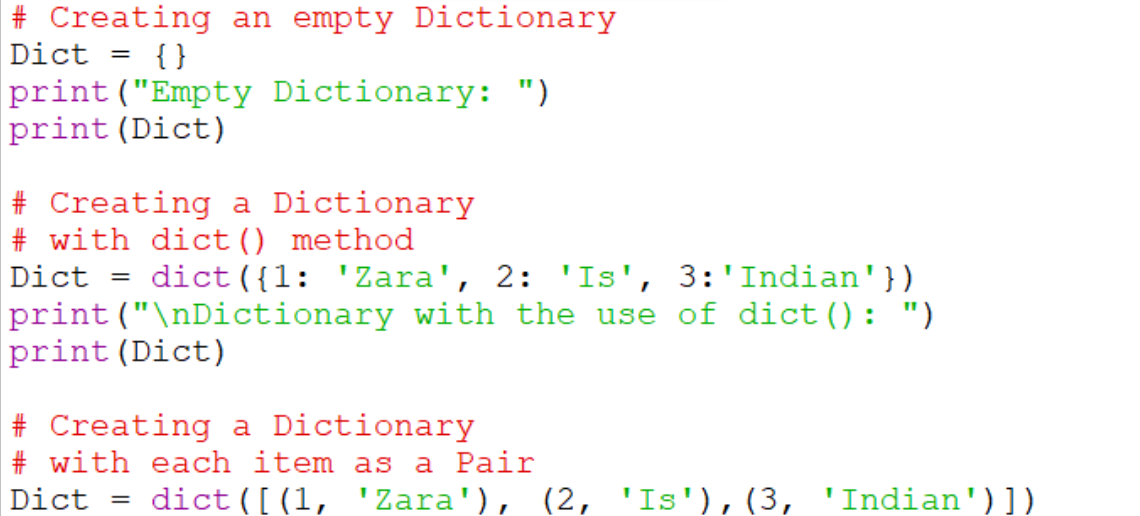

If the length of values_list is less than the length of keys_list, the remaining keys in the dictionary will have their values set to None.


My_dict = omkeys(keys_list, default_value)īelow are some of the good features of this method: This method can also be used to create a dictionary with default values for all keys, by specifying a default value as the second argument to the fromkeys() method. This method is useful when we have a list of keys and want to assign the same value to each key. Then we can use a for loop to iterate over the keys in the dictionary and set their values to the corresponding value from values_list. The fromkeys() method creates a new dictionary with keys from the specified iterable and sets all of their values to None (if no value is specified). Last but not least is using fromkeys() method. fromkeys() – Dictionary from Keys and Values List # These are two lists for keys and valuesįor index, value in enumerate(values_list):ĥ. We can use this function in combination with a loop to create or convert a dictionary from two list. This object contains pairs of the form (index, element) for each element in the iterable. You can use the enumerate() function to add a counter to an iterable object, such as a list, and return an enumerate object. # Create a dictionary using a dictionary comprehension A dictionary comprehension is a concise and more pythonic way to create a new dictionary from an iterable by specifying how the keys and values should be mapped to each other. Dictionary Comprehension to Convert Two Lists to DictĪnother method to convert two lists into a dictionary is by using dictionary comprehension. This is because, in a dictionary, each key can only have one corresponding value.ģ. If there are two keys with the same name, the dict() constructor will only keep the last value associated with the key. If the lists have different lengths, the zip() function will truncate the longer list to match the length of the shorter list. The zip() function in Python is used to combine two lists into a single list of tuples, where the first element of the tuple contains the elements of first list, the second element of the tuple contains the element from second list and pass this as an input to dict() constructor to create a dictionary.įollowing is an example of using dict(zip()) to convert two lists into a dictionary. Use zip() to Convert Two Lists to Dictionary # Method 4: Using the fromkeys() method and a loopĢ. # Method 3: Using the zip() function and a loop # Method 2: Using the enumerate() function and a loop My_dict = dict(zip(keys_list, values_list)) # Method 1: Using the zip() function and the dict() constructor # Quick examples of converting two lists into a dictionary

We will discuss each of the example in detail in later sections.
#CREATE DICT FROM LIST PYTHON HOW TO#
You can get an idea of how to convert two lists into a dictionary. If you are in hurry this is a good place to start.
#CREATE DICT FROM LIST PYTHON CODE#
These code examples will give you a high-level overview of what we will discuss in this article. Quick Examples of Converting Lists into a Dictionary


 0 kommentar(er)
0 kommentar(er)
